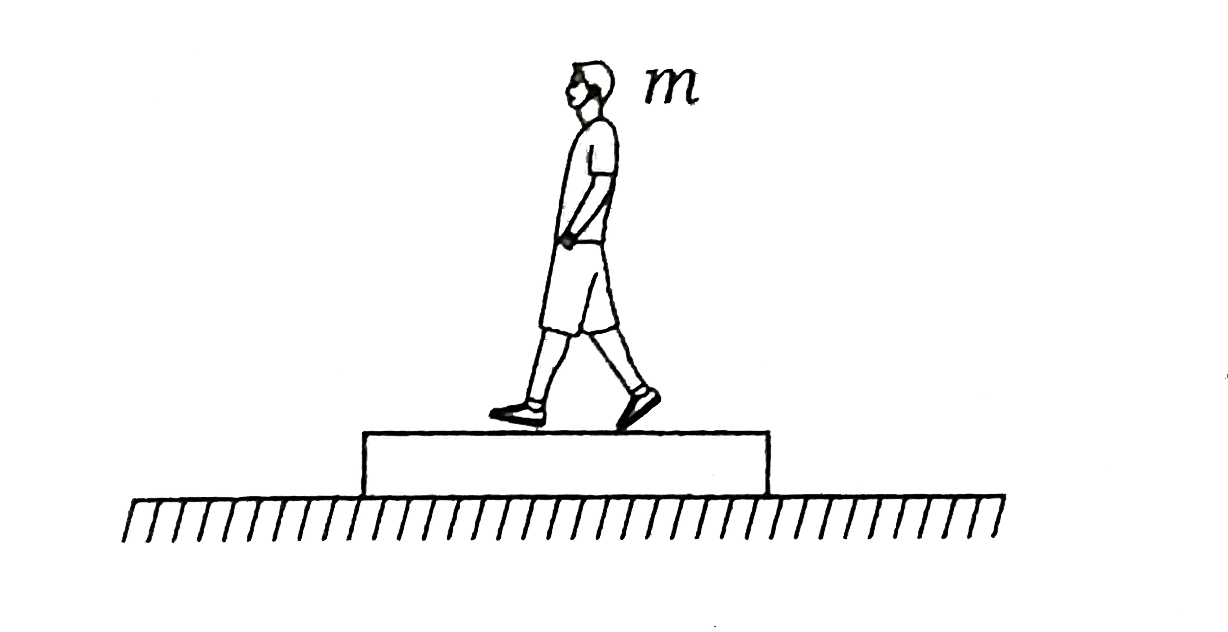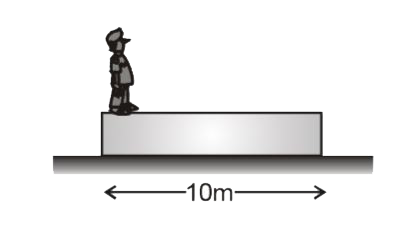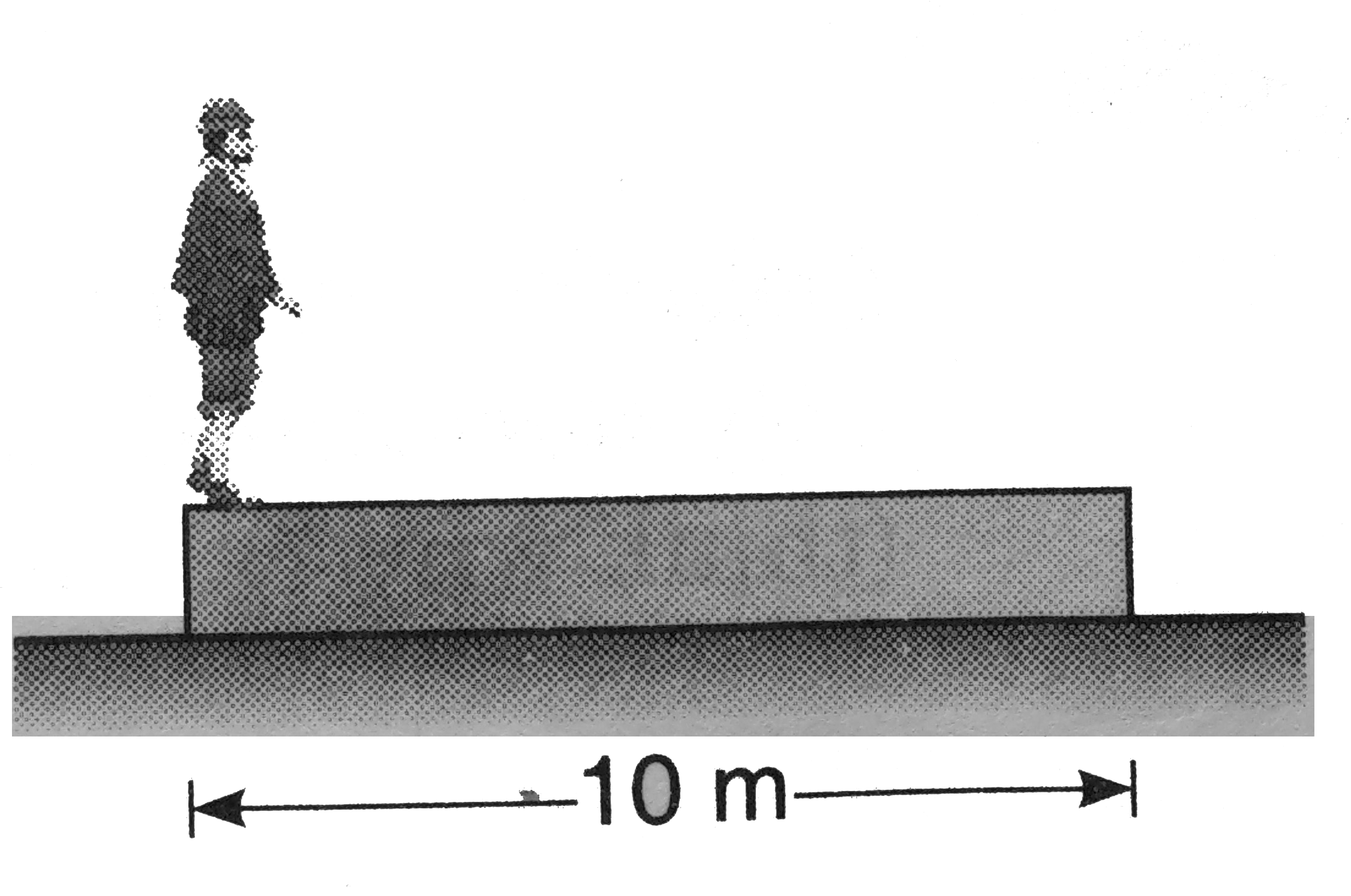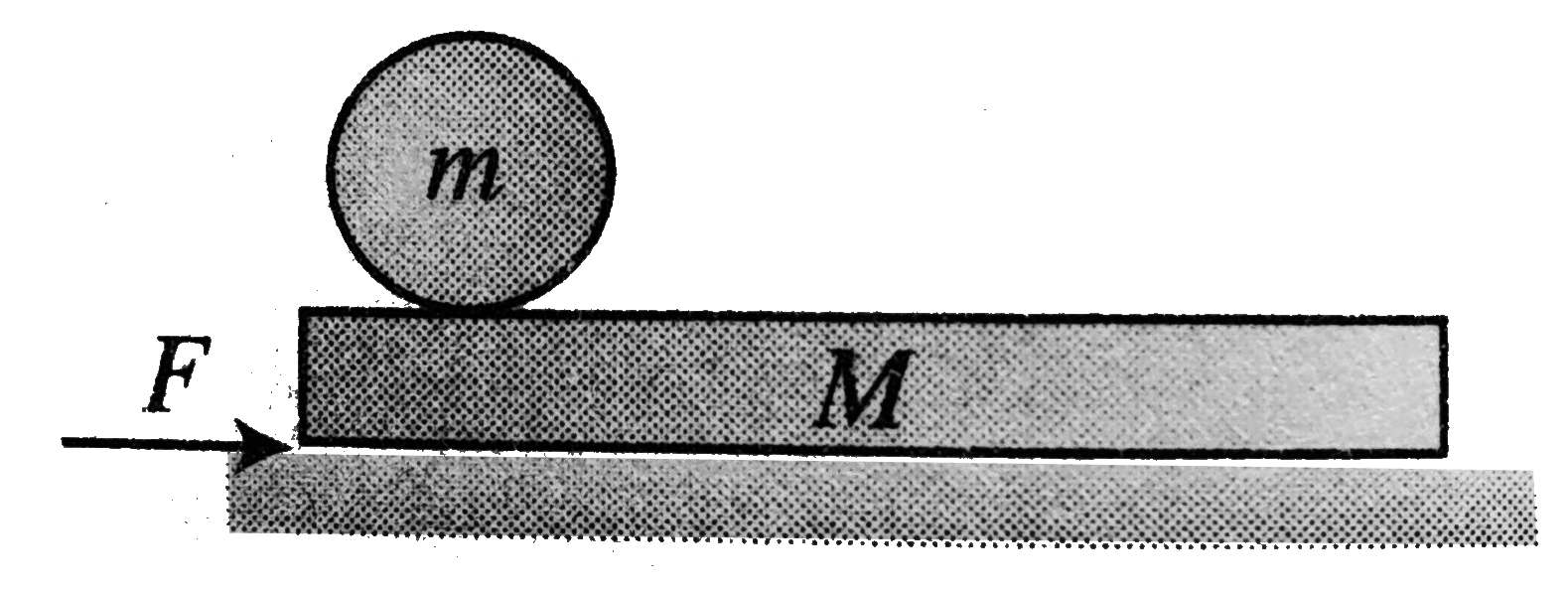A plank with a body of mass m places on it starts moving straight up according to the law y=a(1−cosωtt), whee y is the displacement from the initial position, ω=11s−1. Find :
(a) the time dependence of the force that the body exerts on the plank if a=4.0cm, plot this dependence,
(b) the minimum amplitude of oscillation of the plank atwhich the body starts falling behind the plank,
(c) the amplitude of oscillation of the plank at which the body springs up to a height h=50cm relative to the initial position (at the moment t=0).
For the block from Newton's second law in projection form Fy=mwy
N−mg=m..y….(1)
But from y=a(1−cosωt)
We get ..y=ω2acosωt.....(2)
From Eqns (1) and (2)
N=mg(1+ω2agcosωt)...(3)
From Newton's third law the force by which the body m exerts on the block is directed vertically downward and equals N=mg(1+ω2agcosωt)
(b) When the body m starts, falling behind the plank or loosing contact, N=0, (because the normal readion is the contact force ). Thus from Eqn. (3)
mg(1+ω2agcosωt)=0 fro some t.
Hence amin=g/ω2≅8cm.
(c) We observe that the motion takes place about the mean position y=a. At the initial inistant y=0. As shown in (b) the normal reaction vanishes at a height (g/ω2) above the position of equilibrium and the body flies off as a free body. The speed of the body at a distance (g/ω2) from the equilibrium position is ω√a2−(g/ω2)2, so that the condition of the problem gives
[ω√a2−(g/ω2)2]2g+gω2+a=h
Hence solving the resulting quadratic equation and taking the positive roof ,
a=−gω2+√2hgω2≅20cm.
Similar Questions
A plank with a body of mass m placed on it starts moving straight up according to the law y=a(1−cosωt), where y is the displacement from the initial position, ω=11rad/s. Find
(a) The time independence of the force that the body exerts on the plank.
(b) The minimum amplitude of oscillations of the plank at which the body starts falling behind the plank.
View SolutionA plank with a bar placed on it performs horizontal harmonic oscillations with amplitude a=10cm. Find the coefficient of friction between the bar and the plank if the former starts sliding along the plank when the amplitude of oscillation of the plank becomes less than T=1.0s.
View Solution
Knowledge Check
A man of mass m is standing on a plank of equal mass m resting on a smooth horizontal surface. The man starts moving on the plank with speed u relative to the plank. The speed of the man relative to the ground is
 A2uBu2CzeroDu4
A2uBu2CzeroDu4A block of mass m is placed in equilibrium on a moving plank. The maximum horizontal acceleration of the plank for μ=0.2 is:
A2m/s2B3m/s2Cdependent on the mass mDnone of these
A body of mass 1kg is moving according to the law x(t)=(5t+4t2+6t3)m . The force acting on the body at time t=2s is
View SolutionA plank of mass m1 with a bar of mass m2 placed on it lies on a smooth horizontal plane. A horizontal force growing with time t as F′=at (a is constant) is applied to the bar. Find how the accelerations of the plank w1 and of the bar w2 depend on t, if the coefficient of friction between the plank and the bar is equal to k. Draw the approximate plots of these dependences.
View SolutionA wooden plank of mass 20 kg is resting on a smooth horizontal floor. A man of mass 60 kg starts moving from one end of the plank to the other end. The length of the plank is 10 m. Find the displacement of the plank over the floor when the man reaches the other end of the plank.

View SolutionA wooden plank of mass 20kg is resting on a smooth horizontal floor. A man of mass 60kg starts moving from one end of the plank to the other end. The length of the plank is 10m. Find the displacement of the plank over the floor when the man reaches the other end of the plank.

View SolutionA sphere of mass m and radius r is placed on a rough plank of mass M. The system is placed on a smooth horizontal surface. A constant force F is applied on the plank such that the sphere rolls purely on the plank. Find the acceleration of the sphere.

View SolutionA plank of mass m1 with a uniform sphere of mass m2 placed on it rests on a smooth horizontal plane. A constant horizontal force F is applied to the plank. With what acceleration will the plank and the centre of the sphere move provided there is no sliding between the plank and the sphere?
View Solution
